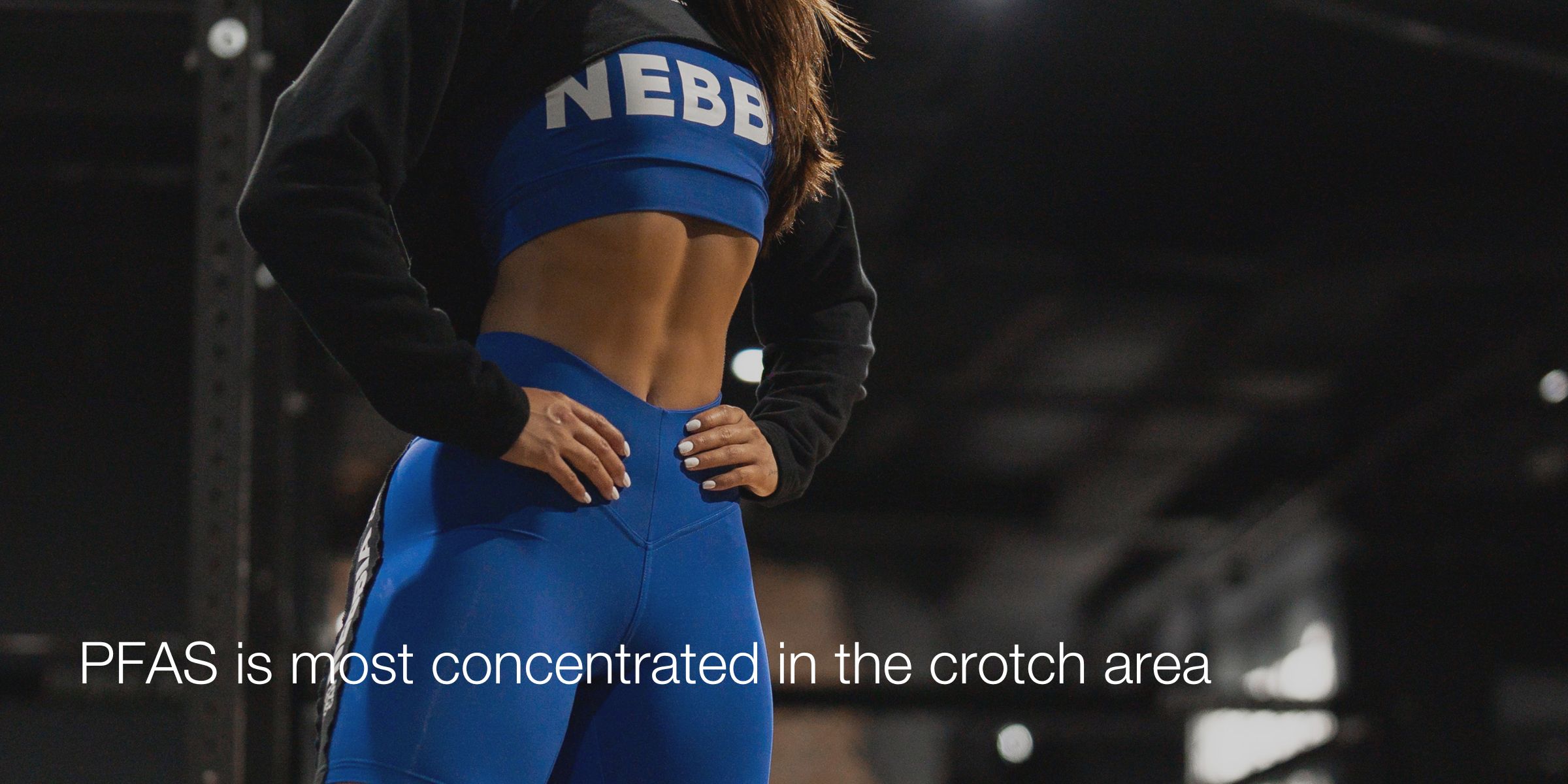
PFAS in Textiles: Beware the Hidden Threat in Your Clothing
Our leggings are safe. If you have your favourite NEBBIA pieces of clothing in your wardrobe, you can wear them without worry. They do not contain PFAS or any other harmful chemicals. We are one of the brands that emphasise the quality and safety of their products. We choose innovative and safe fabrics. This allows us to provide you with clothing that is tailored to your needs and, more importantly, that are not harmful to your health.
What does PFAS stand for? Perfluoroalkyl and polyfluoroalkyl substances are a group of substances that enter our environment and body. They have become an environmental and public health concern. They are also referred to as “forever chemicals”. How do PFAS enter our bodies and why is it important to choose the right clothing?
Buying leggings – more than just fashion risks
PFAS are used to improve the properties of textiles such as water, sweat and stain resistance, but also as protection against pests. These properties make them attractive to the textile industry. They can be found in a wide range of clothing such as raincoats, rain jackets, waterproof sportswear, yoga leggings and sports bras from popular brands.
Found not only in clothing, but also in umbrellas and carpets and in hundreds of consumer products, toxic PFAS chemicals can pose a risk to our health and the environment. These “forever chemicals” pollute water and food and accumulate unnaturally in the body. Regulatory bodies in the US are already taking measures against PFASs as more and more information about their harmful effects emerges. Some brands such as LL Bean, Lululemon, Athleta, Patagonia and others have committed to continuously remove chemicals from their manufacturing processes over the next few years.

To get a better idea, let’s take a look at what health risks PFAS are associated with. The greatest concerns are potential carcinogenicity, effects on the endocrine system and negative impact on the immune system. They threaten the liver, thyroid and hormonal system, can affect fertility, cholesterol and blood pressure, and increase the risk of kidney and testicular cancer. They have been nicknamed “forever” because they tend to accumulate in the body and are difficult to excrete.
How do PFAS enter the body?
There are several ways that PFAS can enter the body. The fabric touching the skin is just one of them. PFAS have entered most households through water, air, dust and soap. They can also fall off from preparations sprayed on clothing.
Dermatologically, the study of clothing wear on the skin is particularly difficult. The fact that a product contains PFAS does not necessarily mean that this chemical will enter the bloodstream from the leggings or shorts through the skin. It can enter – either from fabric or dust particles – into sebum and sweat. Whether these chemicals enter the bloodstream has not yet been proven.
Nevertheless, we should be careful when wearing leggings, shorts and sweatpants and remember to wear underwear. The crotch area is the most common place on clothing where detectable organic fluoride, a PFAS marker, is found. This was demonstrated in a consumer study in which 32 pieces of activewear, mostly leggings from different brands, were tested in the laboratory for the presence of fluoride. 25% of them actually contained PFAS.

How to choose safe clothing?
When choosing clothing, it is important to pay attention to what it contains. Don’t take the importance of composition lightly. Here are some tips on what not to forget:
Read the labels:
Look for clothing that is labelled as PFAS-free or low PFAS.
Be interested in the materials:
Again, take a look at your preferences in textiles.
Buy from reliable brands:
Choose brands that are transparent about the materials used and promote product safety.
Recycle and maintain your clothing:
Extend the life of your clothes and reduce the need for new purchases by carefully maintaining and recycling your clothing.
You can also give your clothing a second chance by using our bazaar. You will support the idea of sustainability with us. We are actively working to reduce the burden on the environment. That’s why we have set up NEBBIA second-hand clothing exchanges in our stores.
PFAS are chemicals that require our attention. It’s important to know what’s in our clothing. Buy conscientiously and support initiatives to develop safe, innovative and sustainable materials in the textile industry. This protects not only your health but also the environment.


